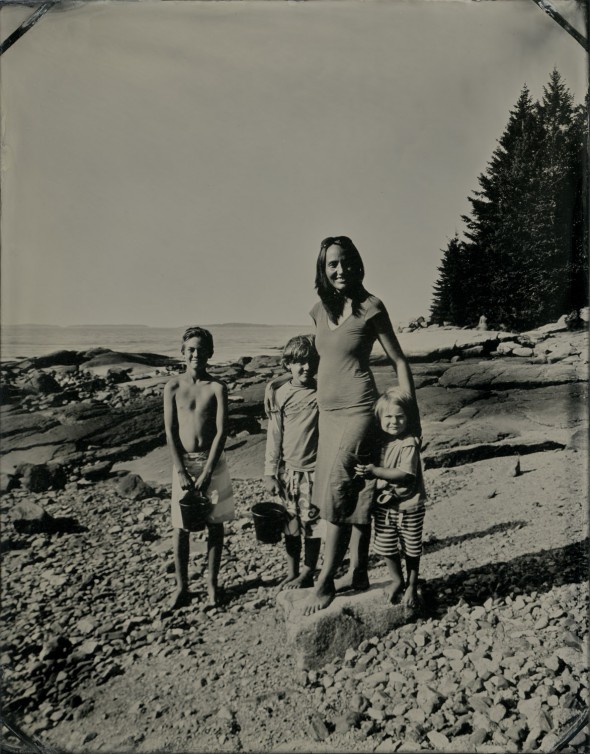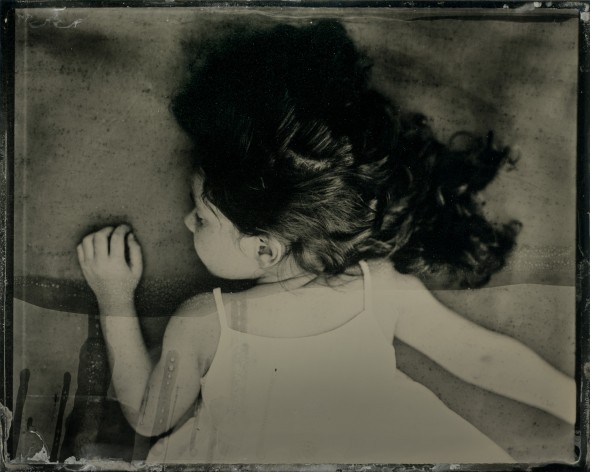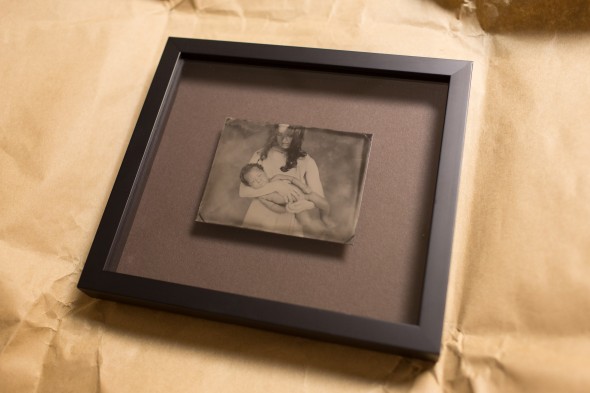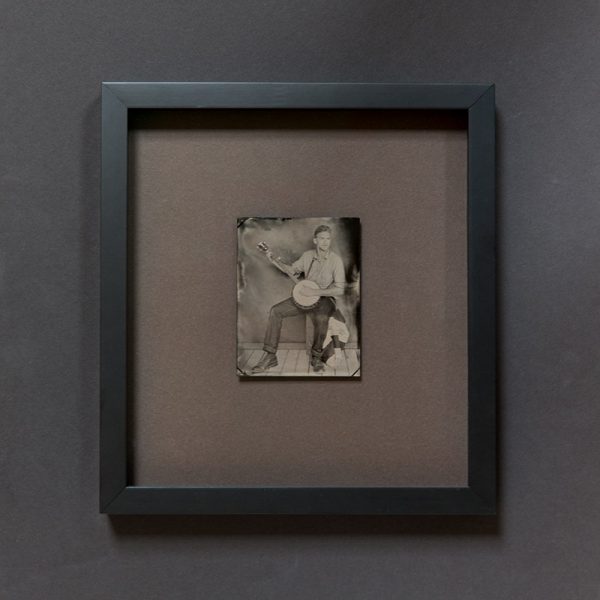One of my favorite things to do with photography is to make tintype portraits. Tintypes were a kind of photography invented in the 1850s and which was very widely used well into the 20th century. Tintypes were some of the first high-quality and (relatively) low cost means of making photographs, and during the second half of the 19th century itinerant tintypists roamed the country making portraits for many people and families for whom having a photograph had previously been unaffordable.
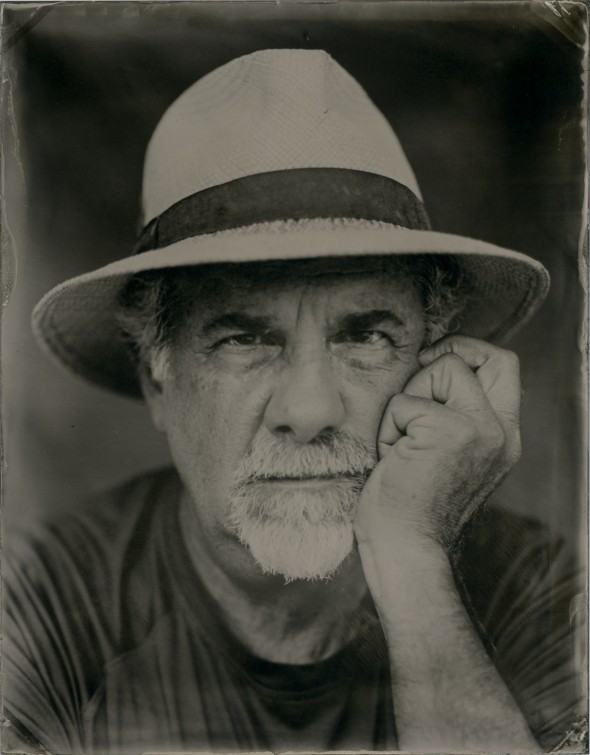
These days making tintypes is far from the cheapest means of having your portrait made. You can probably pull your cell phone out of your pocket and make a decent selfie in the time it took you to read this paragraph. But in an age where such whimsical photos are ubiquitous and, being digital, largely fleeting and never made into an actual print, there is something fantastic about holding an object in your hand.
Tintypes are photographs made on a piece of metal – not even a flimsy delicate piece of paper – from scratch, from compounds bought from a chemical supply company. I take a piece of metal, add my mixtures to it, and make your image right on the metal plate.
Read more about making tintypes, including some behind-the-scenes photos, in this article.
Pricing
Base package: $250 for the first two tintypes, $50 per additional tintype (during the same session). This assumes you are within a reasonable travel radius from my location. I love to travel all over, but I might need to charge a bit for travel expenses. More on that in a bit.
Other arrangements can be worked out if you have a number of shots in mind, a family portrait day, etc.
I usually work with a camera that makes tintypes that are 3.5 inches by 4.5 inches in size. I do have a camera which makes 7in x 9in tintypes, but as they are four times the size, everything seems to be four times the hassle and expense, too. If you are interested in larger plates by all means let me know and we can work something out!
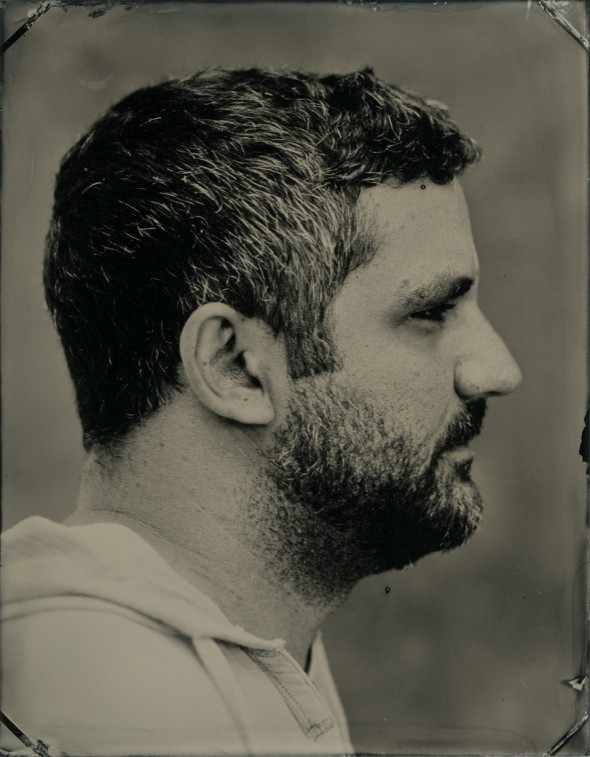
Since tintypes are unique objects, and since you’re buying the portrait session, you get the original pieces of metal! I generally do want, however, a tintype for my own portfolio, so during the session I will make at least one for that purpose. I will include a digital copy of those images in addition to your images!
Making tintypes requires quite a bit of equipment and supplies, and while I would leap at the chance to do this anywhere in the world, if you aren’t within driving distance of my location, the travel expenses and logistics would have to be taken into consideration. At the very least I have a car trunk full of stuff. Some of it is too hazardous to be allowed on airplanes, so I can’t fly with it, and for the same reason it can’t easily be mailed ahead.
There are definitely ways to make it work long-distance, so if you’re interested but you aren’t where I am*, get in touch! I can have raw materials shipped directly to your location and prepare the chemicals when I get there, for example.
*Where I am: good question. I live in Tempe, Arizona at the moment!
What to expect
First of all, a tintype portrait sessions is fun. It’s a hands-on process, it looks cool, it smells funny, and it’s always entertaining. You are welcome to watch the process. It all takes place in visible light – safelight conditions, for you darkroom folks – and I am happy to explain how things work and what I’m doing.
Portrait day
Each session will take about 11/2 hours of your time. I will need an additional 45 minutes (roughly) to set up before and again to clean up after the portraits are made.
To make one image usually requires 10-15 minutes (after everything is set up), although you only need to sit very still for 2-12 seconds, depending on how bright the light is. The rest of the 10-15 minutes involves composing, focusing, and, primarily preparing the plate for exposure and then developing after the portrait is made. It all has to be done at once – a very slow, but very cool “instant” photo!
I need a space where I can set up my portable darkroom – this needs to be either outdoors, or in a utility-type space (garage, for example) at least 15 ft square. Other than that all I might need is access to water – a utility sink or hose – but I can bring my own if necessary.
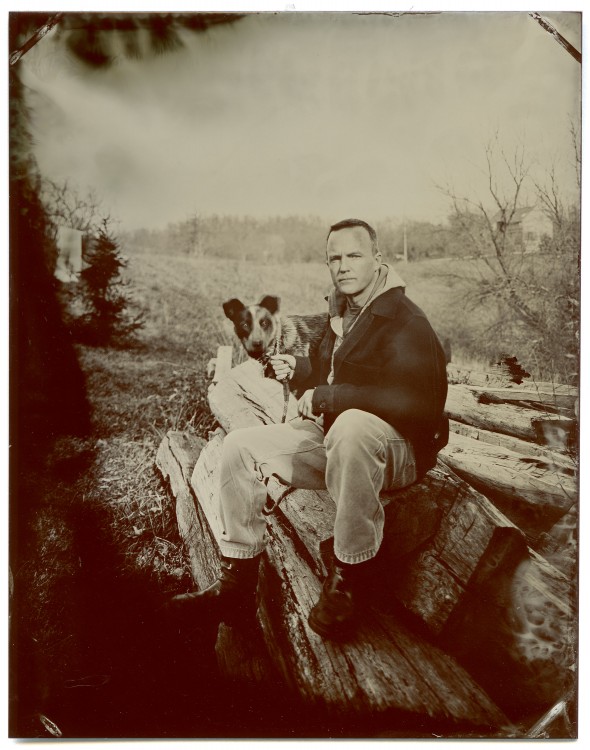
We also need a good space with access to sunlight – generally outdoors, but doorways or window areas can also work. The process requires a lot of light at the UV end of the spectrum, so the usual lights in a house, no matter how bright, don’t really cut it for this type of photography.
Delivery
After I make the tintypes they need to be thoroughly washed and dried. After that I can scan them to make digital versions, which then need to be retouched for dust and lint. Once the tins have been scanned I will then varnish them, and that needs 36-48 hours to cure.
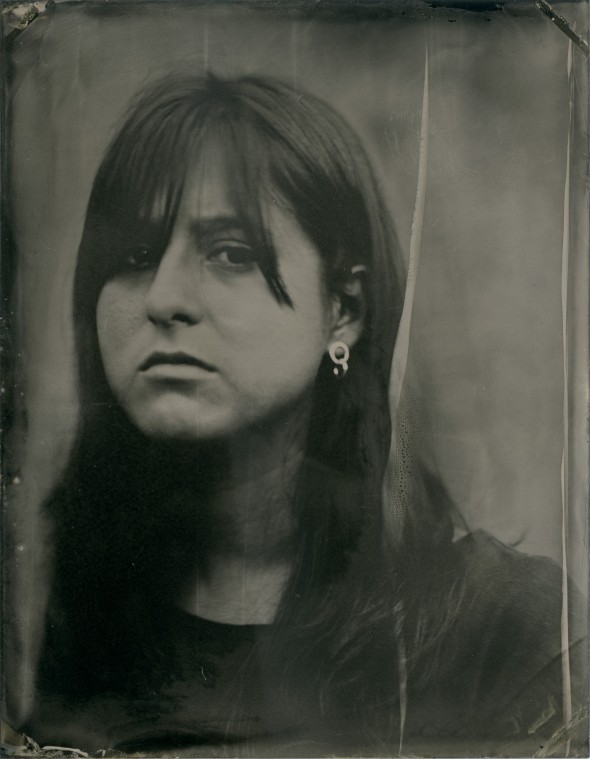
In short, it will be a certain period of time – probably 2-3 weeks – after the portrait session before I can get the tintypes to you either in person or via the mail. (Digital scans will come much sooner though.)
Framing
If you are interested in having your tintype framed I can show you some options for what I think looks nice, and I can also work with my framer to go ahead with the work so that you get a framed tintype ready to hang on your wall!
Framing is optional, but I do have some strong feelings about it. One of the reasons I make tintypes, aside from it just being fun, is that they are unique and tangible objects. I think that the presentation of them should reflect and preserve that nature of being an object.
I have the tintypes mounted on a thick backing – smaller than the surface of the tintype plate, so that it is hidden behind it – which allows the plate to sit above the background and be presented as a distinct object. All of this is then protected by a piece of glass.
My preferred method of framing results in a frame of about 8 inches by 10 inches. You are welcome to buy a tintype unframed and frame it yourself, too!
